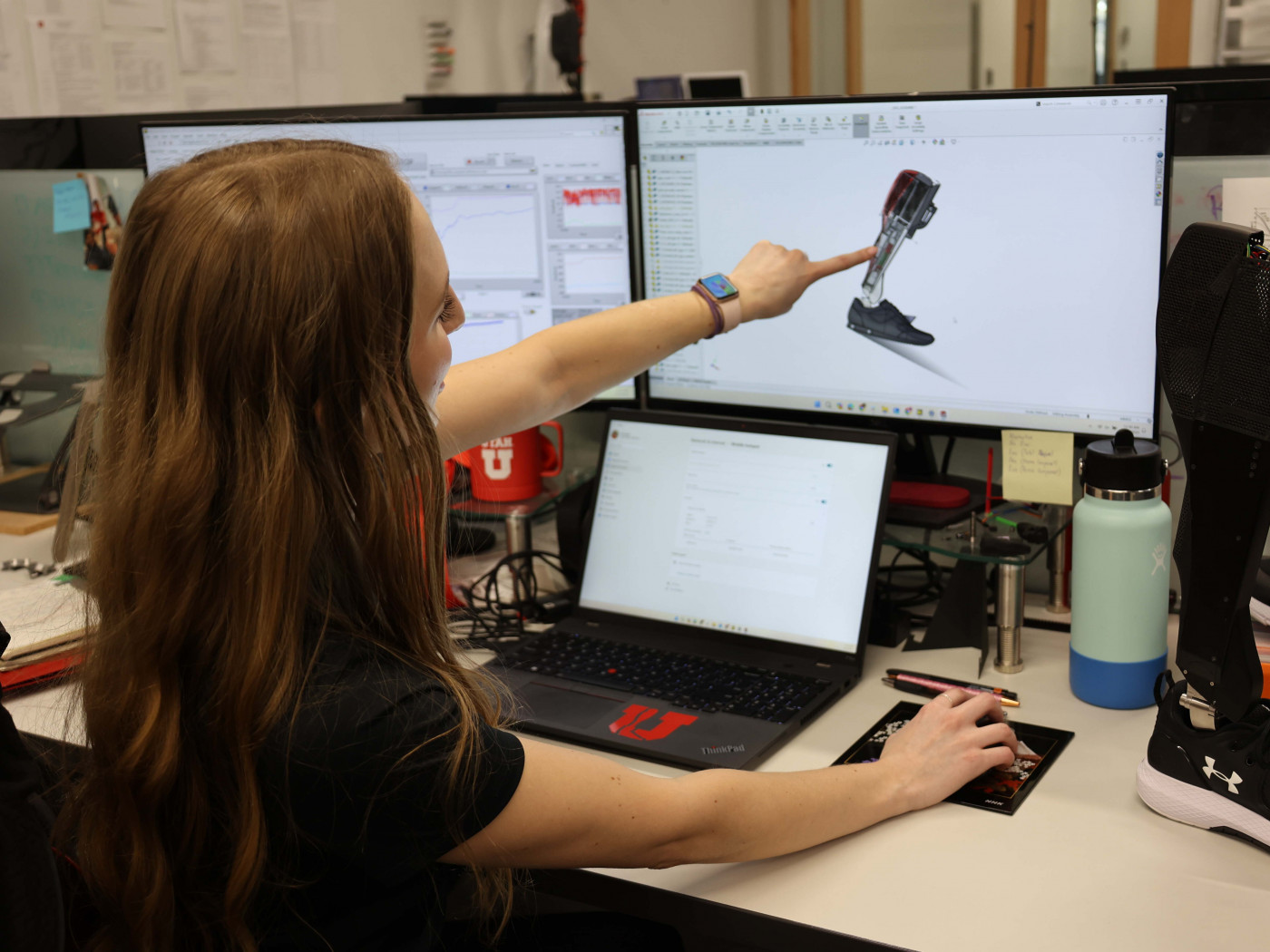Dr. Tommaso Lenzi, Dr. Lukas Gabert (post-doctoral fellow), Dr. Rosemarie Murray (post-doctoral fellow), Andrew Gunnel (student)
Ergonomics and Safety
R01HD098154 - T. Lenzi (PI)
National Institutes of Health (NIH) - Eunice Kennedy Shriver National Institute of Child Health and Human Development
09/09/2019-04/30/2025 -- $2.25M total costs
Most of the 400,000 Americans living with an above-knee amputation cannot walk at variable speeds and safely negotiate environmental barriers with their prescribed prostheses. This limited functional mobility severely affects their independence and results in secondary health problems, such as back pain, osteoarthritis, and depression. Powered prostheses have the potential to address these problems by providing energy for climbing on ramps or stairs or standing up from a seated position, and by improving walking stability and foot clearance. However, available powered devices are designed to accommodate the needs of young, strong people, who overwhelmingly lose their limb due to trauma and can already achieve full community ambulation with available passive prostheses. We aim to identify key prosthesis technologies required to improve the mobility level of above-knee amputees from limited (K2) to community (K3) ambulators.
Our central hypothesis is that a lightweight powered prosthesis can facilitate a transition into variable-speed ambulation and the negotiation of environmental barriers (K3 level) for those amputee patients who currently function at the upper end of the K2 level. Our previous work has produced the first powered knee and ankle prosthesis to combine the lightness of a passive device (~5.5 lbs) with the power generation capability of a powered prosthesis (~400 W). In addition, we have developed an innovative control framework that automatically synchronizes the movement of the powered prosthesis joints with the movement of the residual leg, while modulating energy injection based on walking speed. These novel lightweight prosthesis technologies have been preliminary validated with able-bodied subjects and young traumatic above-knee amputees (K3-K4 level) walking on level and inclined ground at variable speeds, and climbing up and down stairs.
Understanding how lightweight robotic technologies contribute to functional mobility will enable innovative design and prescription of prostheses that address the specific needs of dysvascular and geriatric amputees, resulting in better health care, mobility, and quality of life. This contribution is significant because lightweight powered prostheses have the potential to extend longevity and to dramatically improve quality of life for up to a million lower-limb amputees — a population expected to double by 2050. Our approach is innovative because it leverages on a novel prosthesis technology that matches the lightness of available passive prostheses without sacrificing power and torque generation capability to address the specific needs of dysvascular patients for the first time. Cumulatively, this work is expected to provide a comprehensive understanding of the engineering, biomechanical, and clinical factors that contribute to the improvement of functional gait ability of amputee patients from limited to community ambulators.
Publications:
- Powered Knee and Ankle Prosthesis with Adaptive Control Enables Climbing Stairs with Different Stair Heights, Cadences, and Gait Patterns
- Powered knee and ankle prostheses enable natural ambulation on level ground and stairs for individuals with bilateral above-knee amputation: a case study
- Ambulation Mode Classification of Individuals with Transfemoral Amputation through A-Mode Sonomyography and Convolutional Neural Networks
- A lightweight robotic leg prosthesis replicating the biomechanics of the knee, ankle, and toe joint
- Design of an Underactuated Powered Ankle and Toe Prosthesis
- Indirect Volitional Swing Control Allows for Level-ground Walking and Crossing over Obstacles with a Powered Knee and Ankle Prosthesis
- A Compact, Lightweight Robotic Ankle-Foot Prosthesis




 © 2025 Rocky Mountain Center for Occupational and Environmental Health
© 2025 Rocky Mountain Center for Occupational and Environmental Health